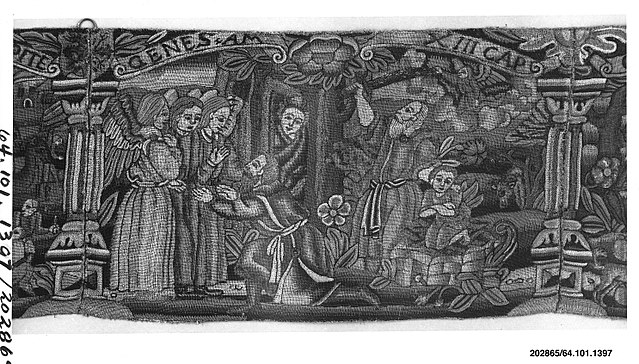Needlepoint is a type of canvas work, a form of embroidery in which yarn is stitched through a stiff open weave canvas. Traditionally needlepoint designs completely cover the canvas. Although needlepoint may be worked in a variety of stitches, many needlepoint designs use only a simple tent stitch and rely upon color changes in the yarn to construct the pattern. Needlepoint is the oldest form of canvas work.
Embroidery that is not needlepoint often uses soft cloth and requires an embroidery hoop.
The Bradford carpet, completed in the early 17th century, is a famous example of large canvas work. It is currently housed at the Victoria and Albert Museum.
From Switzerland, a valance depicting the Binding of Isaac – early 17th century.
A fire screen in Rococo style.
Berlin wool work is a style of embroidery similar to today's needlepoint that was particularly popular in Europe and America from 1804 to 1875. It is typically executed with wool yarn on canvas, worked in a single stitch such as cross stitch or tent stitch, although Beeton's book of Needlework (1870) describes 15 different stitches for use in Berlin work. It was traditionally stitched in many colours and hues, producing intricate three-dimensional looks by careful shading. Silk or beads were frequently used as highlights. The design of such embroidery was made possible by the great progress made in dyeing, initially with new mordants and chemical dyes, followed in 1856, especially by the discovery of aniline dyes, which produced bright colors.
Woman's purse, Berlin wool work, Europe, cotton canvas with wool needlepoint, silk-braided cord, and silk chenille tassels, c. 1840, Los Angeles County Museum of Art, M.2007.211.280.
Boy's slippers, Berlin wool work, 1800–1850, Los Angeles County Museum of Art, M.2007.211.309a-b.






